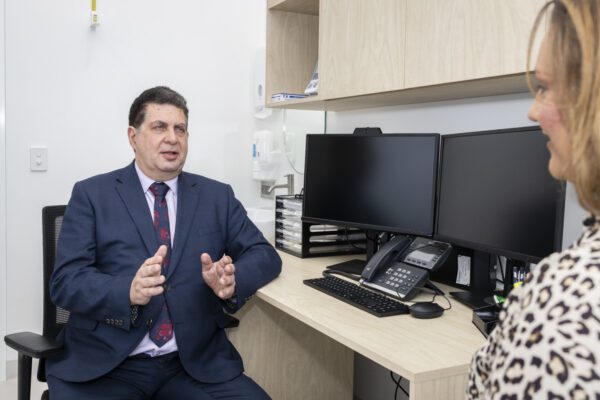
This article may be helpful if you are:
- Seeking to understand the difference between the winter blues and seasonal affective disorder (SAD).
- Experiencing symptoms of seasonal depression that aren’t going away or are getting worse.
- Supporting a loved one experiencing symptoms of seasonal depression.
- Seeking to understand the causes, symptoms and treatment options for seasonal depression.
- Actively in need of a treatment program for seasonal depression.
Australia is known and well-loved for its warmer weather. All year round, tourists flock to our warm and sunny continent to escape the colder months, soak up some sun and enjoy all the benefits of a warm climate. But not all of Australia’s states are created equal when it comes to the weather, and for those of us living in these cooler places, the impact on our emotional and mental health can be deeply felt.
While Australians seem less affected by seasonal depression – also known as seasonal affective disorder (SAD) – than other populations, it is still a very real experience for many of us.
If you’re worried that you or a loved one might be feeling the impact of SAD as we enter the colder months, this article will help you learn more about the condition and what you can do to manage symptoms.
What is Seasonal Depression?
Seasonal depression, or seasonal affective disorder (SAD), is a type of depression that occurs in a cyclical pattern, typically related to changes in the seasons.
It’s characterised by the onset of depressive symptoms during specific seasons, most commonly the winter months, although it can also occur during spring and summer for some individuals.
The exact cause of seasonal depression is not fully understood, but some believe it to be somewhat related to reduced sunlight exposure and shorter days during the winter season.
The decrease in natural light can disrupt the body’s internal clock (circadian rhythm) and affect the production of certain chemicals in the brain, such as serotonin and melatonin, which regulate mood, sleep, and appetite.
These changes can lead to decreased mood and other common depressive symptoms that can worsen throughout the season.
Is Seasonal Depression More than Simply the ‘Winter Blues’?
While lots of people admit to feeling some mild mood changes or sadness during the winter months, often referred to as the ‘winter blues’, seasonal depression is a more pronounced experience of these feelings.
“The winter blues are generally considered a normal response to seasonal changes and do not meet the diagnostic criteria for seasonal depression, a specific subtype of depression,” explains Peter Hayton, Chief Psychologist at The Banyans.
“While the winter blues typically resolve on their own as the seasons change and do not significantly impair daily functioning, symptoms of seasonal depression tend to become more severe and persist for an extended period,” Peter continues. “This experience can interfere with your ability to carry out normal activities and have a real impact on your daily life, including relationships and work.”
The critical distinction between the winter blues and diagnosable seasonal affective disorder is the severity and persistence of symptoms.
“Seasonal depression is a diagnosable mental health condition that requires professional evaluation and treatment. If you think you might be experiencing this, it’s important to seek support sooner rather than later,” Peter adds.
What Are the Symptoms of Seasonal Affective Disorder?
Symptoms associated with seasonal depression usually start mild but worsen as the season progresses, leaving you feeling low, lethargic and sad. While symptoms tend to improve again with the change of the seasons, they can be difficult to experience and should not be ignored.
Common symptoms of seasonal depression may include:
- Depressed mood, sadness, or a feeling of hopelessness.
- Low energy levels and increased fatigue.
- Changes in sleep patterns, such as oversleeping or difficulty sleeping.
- Increased appetite, leading to weight gain.
- Difficulty concentrating and decreased interest in usual activities.
- Social withdrawal and decreased social interaction.
- General irritability, restlessness or anxious feelings.
It’s important to note that while seasonal depression follows a seasonal pattern, meaning it fades once the weather gets warmer, it can still significantly impact daily functioning and overall wellbeing.
“We find that many people try to ‘shake off’ or ignore their symptoms, but this can make them feel worse in time,” advises Peter. “Even if your symptoms feel mild, being proactive and seeking the right support to manage them before they worsen can make a significant difference in your quality of life throughout the season.”
What Causes Seasonal Affective Disorder?
The exact cause of seasonal affective disorder (SAD) is not fully understood, but several factors are believed to contribute to its development.
Some primary factors associated with SAD include:
Reduced sunlight exposure:
Reduced sunlight exposure during winter is considered a significant trigger for SAD. The decrease in sunlight can disrupt the body’s internal clock and affect the production of certain chemicals in the brain, such as serotonin and melatonin.
Biological factors:
Some individuals may have a biological predisposition to developing SAD. Changes in the regulation of serotonin, a neurotransmitter associated with mood, have been observed in individuals with SAD.
Genetics:
There appears to be a genetic component to SAD, as individuals with a family history of depression or SAD may be more susceptible to developing the condition.
Imbalances in neurotransmitters:
Neurotransmitters, such as serotonin and norepinephrine, play a crucial role in regulating mood. Imbalances or fluctuations in these neurotransmitters can contribute to the onset of depression, including SAD.
Circadian rhythm disruption:
The disruption of the body’s internal clock due to changes in daylight and darkness can affect sleep patterns, mood, and other physiological functions, potentially leading to the development of SAD.
Not everyone who experiences reduced sunlight during certain seasons will develop SAD, and the specific combination of factors contributing to SAD can vary from person to person.
Seeking Treatment for Seasonal Affective Disorder?
Treatment options for SAD typically involve a variety of approaches that need to be tailored for the individual and the severity of their experience. Whether they have additional mental health conditions or needs is also a factor in treatment options.
Here’s an overview of some of the common methods used to manage and treat seasonal depression:
Exposure to natural light:
Maximising exposure to natural sunlight, even during winter, can be beneficial. Spending time outdoors during daylight hours and opening curtains and blinds to let sunlight in can help regulate the body’s internal clock and improve mood.
Light therapy:
Light therapy, also known as phototherapy, involves exposure to bright artificial light. Special light therapy boxes emit bright light that mimics natural sunlight. This therapy helps to regulate the body’s circadian rhythm and may alleviate depressive symptoms. Light therapy is usually done for a specific duration each day, typically in the morning.
Counselling & Therapy:
Counselling and other therapies, such as acceptance commitment therapy (ACT) can be beneficial for managing seasonal depression. ACT assists us with managing our competing values, and aligning our activity accordingly, something that can change in different seasons.
Medications:
Medications like selective serotonin reuptake inhibitors (SSRIs) are commonly used, although other types of antidepressants may also be prescribed. Medication can help regulate brain chemicals and alleviate symptoms of depression.
Mental Health Retreats:
Taking dedicated time to heal and manage seasonal depression can make a significant difference. A mental health retreat and dedicated rest program in a warmer climate can give you the time to learn the resources to help you manage your symptoms throughout the season.
It’s important to consult a healthcare professional for an accurate diagnosis and to discuss appropriate treatment options based on the severity of your symptoms, especially medication. Professionals can provide personalised recommendations and guidance to help manage seasonal depression effectively.
Heal From Seasonal Depression at The Banyans
The Banyans provide a world-class mental health recovery program that takes a holistic approach to wellbeing. Located in sub-tropical Queensland and nestled amongst the scenic hinterland, The Banyans offers the perfect environment for guests struggling with seasonal affective disorder or depressive challenges to escape the peak of winter and heal.
Comprising psychological support, stress-relieving activities such as massage, personal training, swimming in our infinity magnesium pool, and delicious meals, our dedicated Rest & Refresh program is perfect for anyone seeking to reset and regroup.
Gain expert support and resources to help you manage seasonal depression while allowing yourself the full opportunity to maximise everything The Banyans offers to support your mental health journey. This includes:
- Recreational outdoor activities in serene Brisbane hinterland
- Magnesium infinity pool
- Exercise physiology & yoga therapy
- Industry-leading health practitioners
- Talk therapy with psychologists and emotional therapy through equine therapy, art therapy, music therapy
- Individual luxury suites
Ready to start your journey today? Speak to our expert team 24/7 on 1300 226 926, or make an enquiry below.
This article was reviewed by the Chief Psychologist at The Banyans, Peter Hayton.















